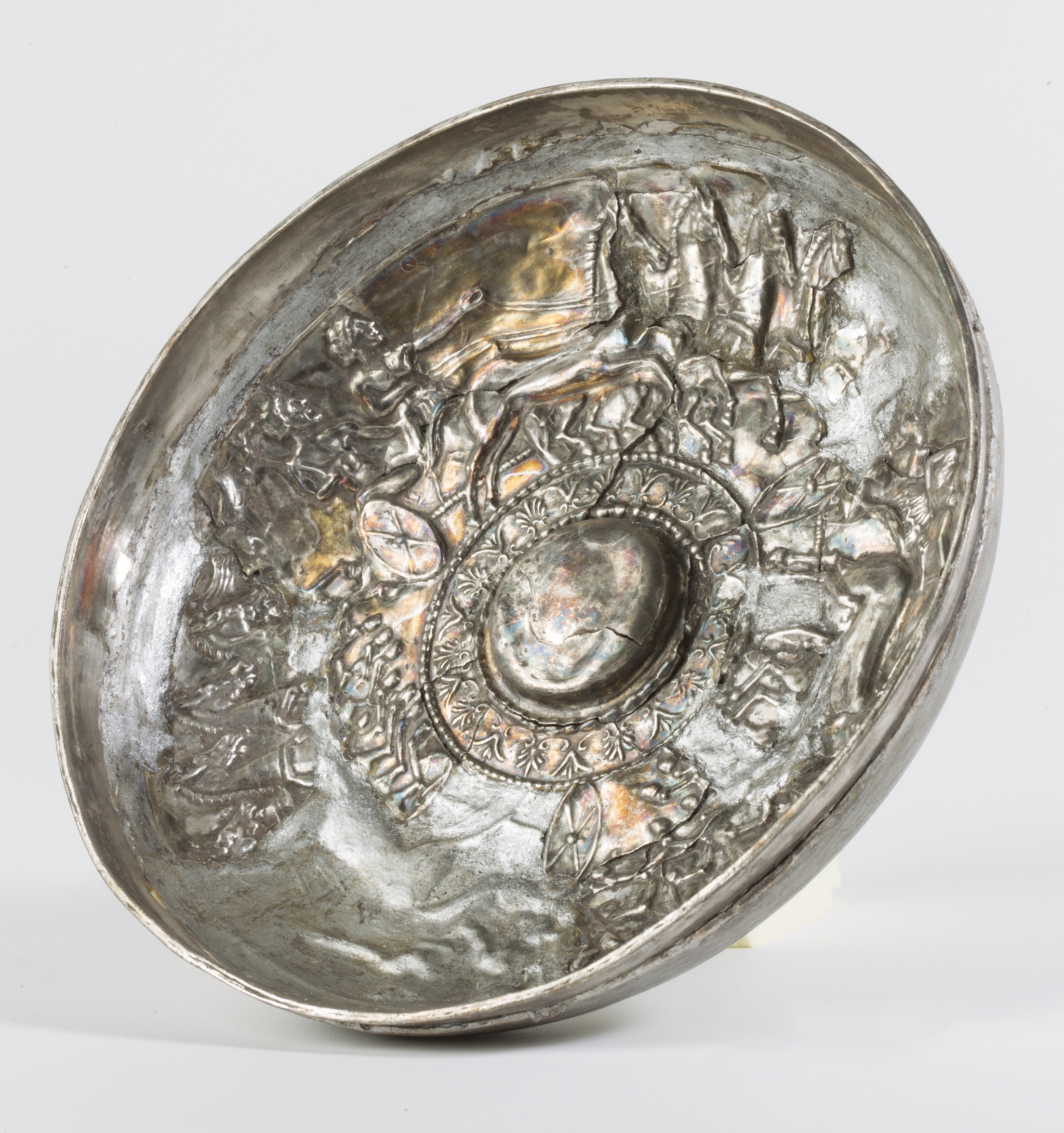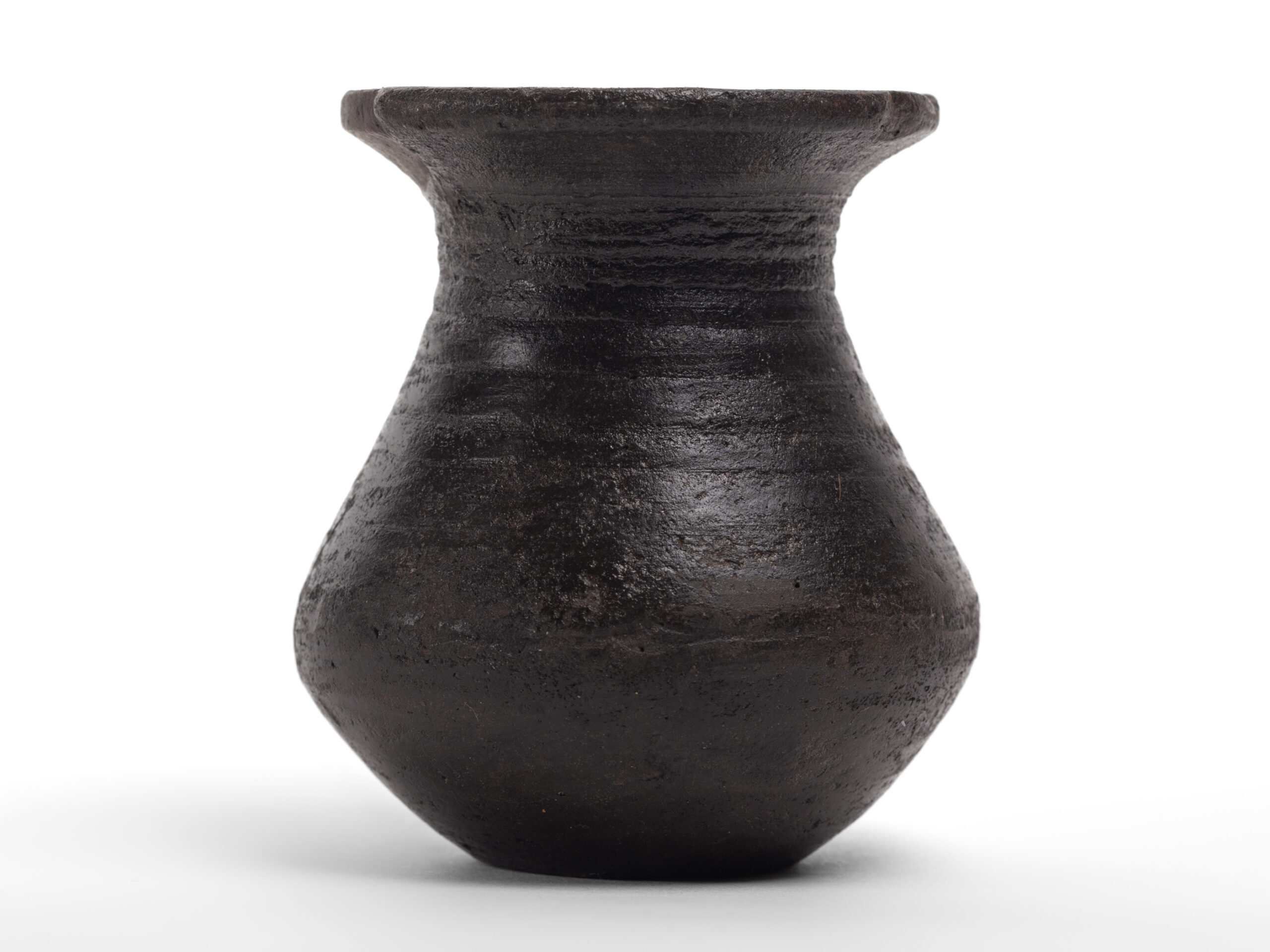- Object type
- patera
- Production date
- -250 / -195
- Fabric -
- Culture
- Protohistory and Iberian world
- Discovery location
- Castellet de Banyoles
- Materials
- silver
- Township
- Tivissa (Europa, Espanya, Catalunya, Tarragona, Ribera d'Ebre)
- Technique
- casting, embossing
- Where is it?
- Exposició permanent
- Dimensions
- 37 x 170 mm






